By Bill Goslin, Davis Vision, Ballston Lake, New York
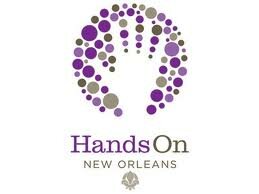 I heard about HandsOn New Orleans from Joan and Harry Thornhill, members of our church, who volunteered in Biloxi in February 2006. Joan and Harry sent daily emails back to us describing their work and experiences. Knowing that I was a “jack of all trades” they thought I should go down and help out.
I heard about HandsOn New Orleans from Joan and Harry Thornhill, members of our church, who volunteered in Biloxi in February 2006. Joan and Harry sent daily emails back to us describing their work and experiences. Knowing that I was a “jack of all trades” they thought I should go down and help out.
I took two weeks vacation from my job and found myself in New Orleans at the end of April. The city I found was truly devastated with blue tarps on roofs, abandoned buildings, piles of debris, hundreds of abandoned cars, flooded homes for miles and whole neighborhoods destroyed. There was much work to be done.
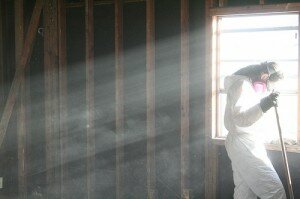
Photo by Ethan Bagley
Although I traveled to New Orleans by myself, I quickly made friends with the staff and other volunteers. Meeting so many folks, from all over the world, who were also there to help was very gratifying to me personally. The volunteer headquarters was simple yet functional with an air conditioned bunk room, great dinners from the church kitchen, hot showers and wireless Internet access to communicate with the folks at home.
I went on my first “house gutting” job in a middle class neighborhood of ranch homes. I was given a sledgehammer and crow bar then began to work on pulling moldy sheetrock and insulation down from ceilings. This was hard hot dirty work but when we were done the inside of the house was transformed; it reminded me of a new house under construction – bare studs waiting for new sheetrock.
I have spent many years as a volunteer fireman and asked if anyone had heard of “pike pole” a tool used by the fireman to pull down sheetrock. This tool has a long pole and would make the “gutting” work a lot easier and much quicker. No one had heard of the tool so after leaving New Orleans I found the tools and got them to New Orleans. Akron Brass Company, of Arkron Ohio, donated the first poles with just a phone call.
 I had the opportunity to work on restoring a Jazz Venue in New Orleans called the “mother in law lounge” named after the hit single written by Ernie Ka-Doe in 1961. Ernie past away a few years ago and his wife, Antoinette Ka-Doe, had been running the lounge until Katrina when she was pulled from the roof of the lounge by a helicopter. We arrived one morning with a truck load of building materials and began work.
I had the opportunity to work on restoring a Jazz Venue in New Orleans called the “mother in law lounge” named after the hit single written by Ernie Ka-Doe in 1961. Ernie past away a few years ago and his wife, Antoinette Ka-Doe, had been running the lounge until Katrina when she was pulled from the roof of the lounge by a helicopter. We arrived one morning with a truck load of building materials and began work.
It was a pleasure to get to know Antoinette and the many members of the “New Orleans Jazz family” who stopped by to thank us for our efforts. I might mention that Miss Antoinette is a great cook and while volunteering we ate authentic new Orleans treats like poboy sandwiches, red beans and rice, jambalaya and crawfish. I look forward to someday visiting the lounge, sipping a beer and listing to some New Orleans Jazz.
I enjoyed the hard work, the fellow volunteers and the HandsOn New Orleans folks who make it all happen. I urge anyone with some spare time to volunteer with HandsOn New Orleans. The experience is life changing; helping others who are in need is very rewarding.
As Arnold would say;
“I’ll be back!”
Bill Goslin lives in Ballston Lake New York, a suburb of Albany, with his wife and two sons; Jacob (9 years old) and Simon (7 years old). He works for a company called Davis Vision where he manages their telecommunications systems.

 by Chris de Veer, former Volunteer & Director of Hands On Gulf Coast (2006 – 2008)
by Chris de Veer, former Volunteer & Director of Hands On Gulf Coast (2006 – 2008)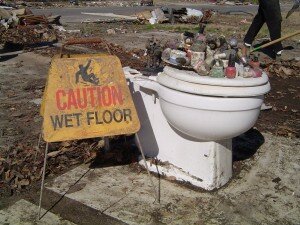 The first neighborhood I visited was East Biloxi, home to many Vietnamese and African Americans.
The first neighborhood I visited was East Biloxi, home to many Vietnamese and African Americans.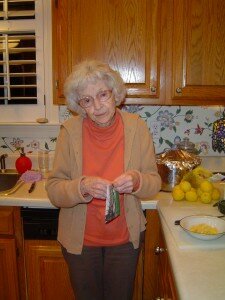 Two years before Katrina, I visited my Grandma, pulled out her photo albums, scanned in every photo, made a database, and asked her to identify everyone in every photo, estimate when the photo was taken, and describe what was going on.
Two years before Katrina, I visited my Grandma, pulled out her photo albums, scanned in every photo, made a database, and asked her to identify everyone in every photo, estimate when the photo was taken, and describe what was going on. ench of rot was overpowering.
ench of rot was overpowering.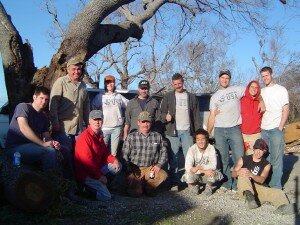 I know my grandmother was lucky compared to many other victims of Katrina.
I know my grandmother was lucky compared to many other victims of Katrina.
 I don’t think either of us truly knew what we were in for…and I think back and cannot believe that there were people from our national office that believed we had the capacity and ability to accomplish what we accomplished.
I don’t think either of us truly knew what we were in for…and I think back and cannot believe that there were people from our national office that believed we had the capacity and ability to accomplish what we accomplished.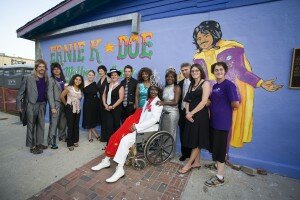 So many people have come from around the world and either come back multiple times or have decided to make New Orleans their home.
So many people have come from around the world and either come back multiple times or have decided to make New Orleans their home.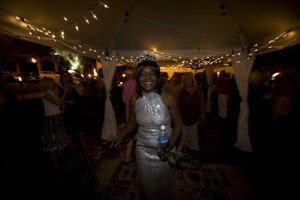

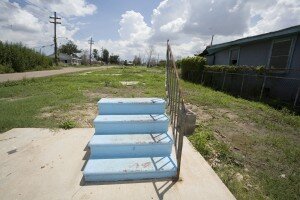 When we were in the Gulf volunteering, the physical destruction caused by the storm was no longer represented by piles of debris or the twisted remains of buildings, but rather by endless stretches of emptiness marked only by driveways and stairs leading to the ghosts of vanished front doors.
When we were in the Gulf volunteering, the physical destruction caused by the storm was no longer represented by piles of debris or the twisted remains of buildings, but rather by endless stretches of emptiness marked only by driveways and stairs leading to the ghosts of vanished front doors.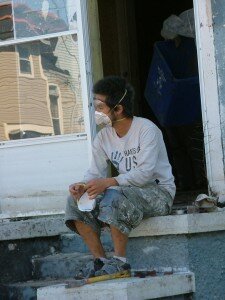 Volunteering with
Volunteering with  “Gutting is fun!” Actually, we all know that it is a heartbreaking job, tempered only by the cathartic relief of exhausting physical labor, and the knowledge that we are actually helping someone clear a space for their future, and dreams for a new beginning.
“Gutting is fun!” Actually, we all know that it is a heartbreaking job, tempered only by the cathartic relief of exhausting physical labor, and the knowledge that we are actually helping someone clear a space for their future, and dreams for a new beginning.
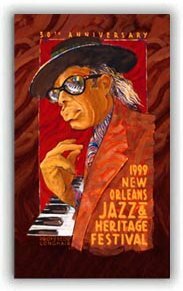
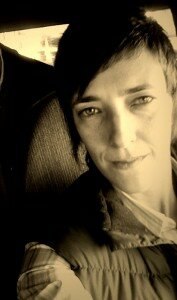 by Erika Putinsky
by Erika Putinsky During my efforts with HandsOn Network on the Gulf Coast after Hurricane Katrina, I had the opportunity to live and work in a place where our nation truly came together as a unified community.
During my efforts with HandsOn Network on the Gulf Coast after Hurricane Katrina, I had the opportunity to live and work in a place where our nation truly came together as a unified community.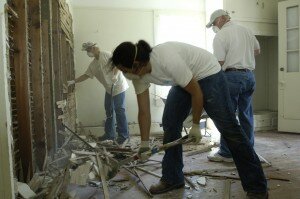 Once the images of the despair and the stories of the survivors reached our world, people began to act.
Once the images of the despair and the stories of the survivors reached our world, people began to act.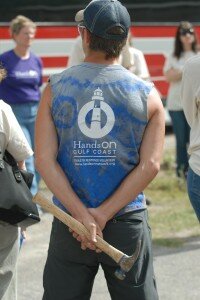 After the hurricane so many people remembered the power in showing up, being willing to help with a hammer to rebuild a home, or offer a hug to rebuild a life.
After the hurricane so many people remembered the power in showing up, being willing to help with a hammer to rebuild a home, or offer a hug to rebuild a life. by Jamie S. Dent, AmeriCorps Program Manager at
by Jamie S. Dent, AmeriCorps Program Manager at  by Veronique Parages, Skills-Based Volunteer Program Director,
by Veronique Parages, Skills-Based Volunteer Program Director, 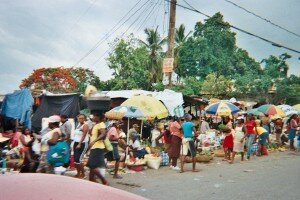 At one point, I shared the tap tap with three women and one of them seemed very poor.
At one point, I shared the tap tap with three women and one of them seemed very poor.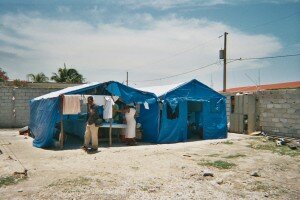
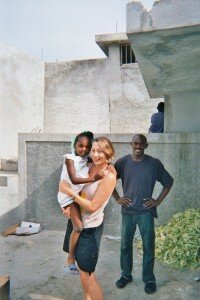 My little friend
My little friend Quiet time
Quiet time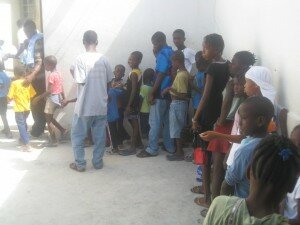 I am so happy I did it.
I am so happy I did it.
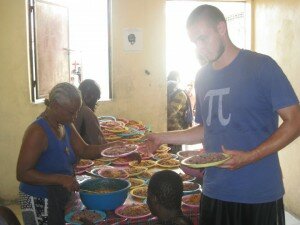 We fill the plates – we give more or less depending on the age – and give it to a person who places it on the table.
We fill the plates – we give more or less depending on the age – and give it to a person who places it on the table. It is always fast and efficient with clear monitoring of who is getting what, with secret codes and rules for people arriving with their own bucket to fill in for families in distress who are not able to come to the window.
It is always fast and efficient with clear monitoring of who is getting what, with secret codes and rules for people arriving with their own bucket to fill in for families in distress who are not able to come to the window.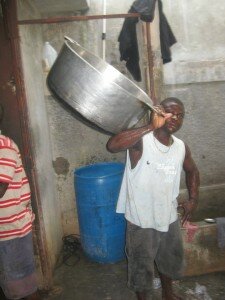 The rice bucket is empty? Let’s bring a new one.
The rice bucket is empty? Let’s bring a new one.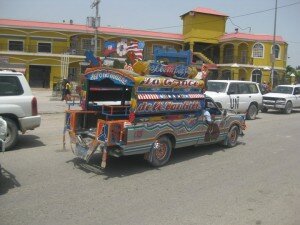 “Tap-tap” is the noise of the passengers’ heads knocking on the roof, the sound of their shoulders and arms hitting the metal borders of the truck bed or their neighbor’s body. It is also the noise of knocking on the roof or the window of the front seats to let the driver know that one of the passengers wants to stop.
“Tap-tap” is the noise of the passengers’ heads knocking on the roof, the sound of their shoulders and arms hitting the metal borders of the truck bed or their neighbor’s body. It is also the noise of knocking on the roof or the window of the front seats to let the driver know that one of the passengers wants to stop.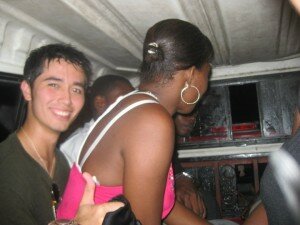 People give you a hand to catch a moving tap-tap still, find places for the pregnant women to sit, hold children on laps, hold a neighbor’s bag, pass on the money and the change, hold you and catch you if you are standing half bent over in between seated people under the low roof losing your balance at each pothole.
People give you a hand to catch a moving tap-tap still, find places for the pregnant women to sit, hold children on laps, hold a neighbor’s bag, pass on the money and the change, hold you and catch you if you are standing half bent over in between seated people under the low roof losing your balance at each pothole. I know it is easy to say and not to do, but talking to the kids, to the students, to the youth in the tap-taps gives me the feeling that if somebody believes in their country and its resources, the Haitians may believe in it again too… How can we help?
I know it is easy to say and not to do, but talking to the kids, to the students, to the youth in the tap-taps gives me the feeling that if somebody believes in their country and its resources, the Haitians may believe in it again too… How can we help?
